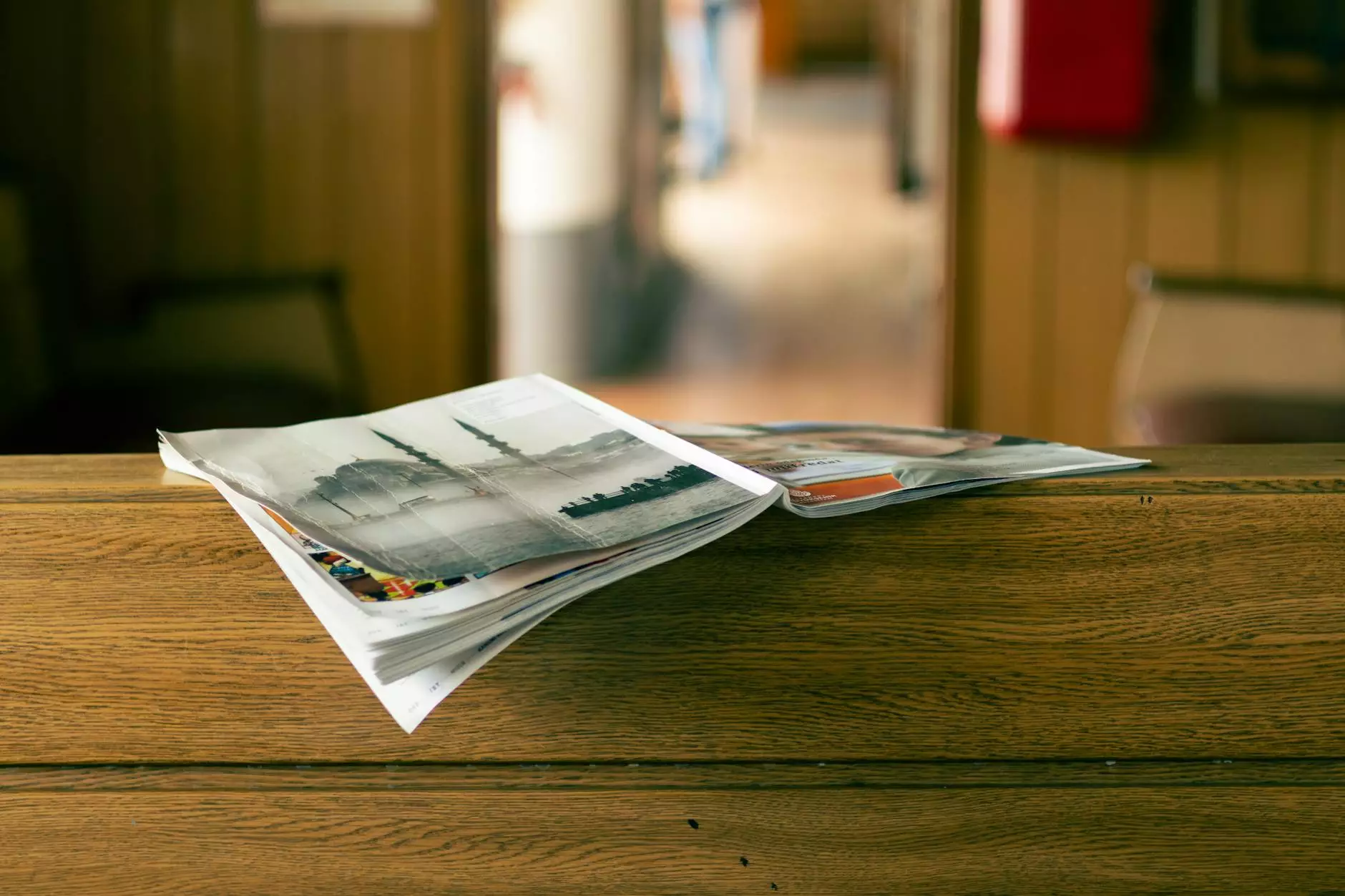How to Print a Booklet: A Comprehensive Guide

In today's digital world, having a physical representation of your work can significantly enhance your brand's visibility and professionalism. Whether you’re creating a company brochure, an instructional manual, or a stylish portfolio, knowing how to print a booklet is crucial. This guide will walk you through the entire process, ensuring that your booklet stands out and meets your expectations.
The Importance of Booklets in Business
Booklets are more than just pieces of paper bound together; they are tools that can communicate your brand's message, inform your audience, and even serve as marketing collateral. Here are a few reasons why printing booklets is beneficial for businesses:
- Professionalism: A well-printed booklet can elevate your business's image, making it appear more established and trustworthy.
- Tangible Marketing: Unlike digital marketing, physical booklets can leave a lasting impression when handed out at events or meetings.
- Versatility: Booklets can serve multiple purposes, from brochures to manuals to catalogs.
- Information Density: Booklets allow you to convey more information without overwhelming your audience, thanks to their multi-page format.
Understanding the Basics of Booklet Printing
Before diving into the process, it’s essential to understand the types of booklets available and their printing requirements. Common types of booklets include:
- Saddle-Stitched Booklets: This is one of the most popular booklet styles, where the pages are folded and stapled along the spine.
- Spiral Bound Booklets: Ideal for manuals and guides, these booklets are bound with a coil of wire or plastic.
- Perfect Bound Booklets: These booklets allow for a more professional look, ideal for catalogs or high-end publications, where the pages are glued together.
Each of these booklet styles has different printing requirements and costs. Choosing the right type for your needs is crucial for achieving the desired result.
Steps on How to Print a Booklet
1. Designing Your Booklet
The first step in the booklet printing process is the design. Here are some tips to consider:
- Choose the Right Software: Use design software like Adobe InDesign, Canva, or Microsoft Publisher to create your booklet layout.
- Set Appropriate Dimensions: Common booklet sizes include A5 (5.83 x 8.27 inches), A4 (8.27 x 11.69 inches), or custom sizes as per your need.
- Consider the Margins: Ensure ample margins to avoid clipping important content during printing.
- Utilize High-Quality Images: Use high-resolution images that won’t pixelate when printed to enhance the visual appeal.
- Maintain a Clear Hierarchy: Use headings, subheadings, and bullet points to organize your content effectively.
2. Choosing the Right Paper Stock
The choice of paper stock plays a significant role in the final look and feel of your booklet. Here are options to consider:
- Cover Stock: This thicker paper is often used for the cover of the booklet, providing durability and a premium feel.
- Text Stock: Use lighter paper for the inner pages, which makes the booklet easier to handle.
- Finish Types: Options include glossy, matte, or uncoated finishes, each imparting a different look and feel to the booklet.
3. Print Setup and Proofing
Once your design is finalized, it's time to set up for printing. Follow these steps:
- Create a PDF: Export your design file as a high-quality PDF to ensure that all fonts and images are embedded correctly.
- Check Orientation: If your booklet is landscape-oriented, ensure that all pages are in the correct position before printing.
- Conduct a Print Proof: Before printing the final batch, request a proof from your printing service to confirm that everything looks as expected.
4. Selecting the Right Printing Service
Not all printing services are created equal. Here are some tips for choosing the best service:
- Look for Specialization: Choose a printer that specializes in booklet printing for quality results.
- Compare Quotes: Obtain quotes from multiple services to ensure you get the best price without sacrificing quality.
- Review Samples: Request samples of previous work to assess the quality and finish of their printing.
5. Finalizing Your Order
Once you’ve chosen a printing service, it’s time to place your order. Make sure to provide:
- Exact Specifications: Clearly specify the quantity, type of binding, paper stock, and finishing options.
- Delivery Punctuality: Set a timeline for completion that aligns with your needs.
Post-Printing Considerations
After your booklets are printed, consider the following:
- Quality Check: Review the printed booklets for quality, checking for any errors or print issues.
- Distribution Strategy: Plan how you will distribute your booklets, whether through direct mail, events, or in-store promotion.
- Recycling and Sustainability: Consider environmentally friendly options for paper and printing to appeal to eco-conscious customers.
Conclusion
Understanding how to print a booklet is an invaluable skill for anyone looking to enhance their marketing materials or create engaging informational resources. By carefully considering each step, from design to distribution, you can produce a professional-grade booklet that effectively communicates your intended message. Partnering with a trusted printing service like Printitza can further ensure that your finished product meets the highest standards of quality.
Embrace the power of print and start creating booklets that will captivate your audience and promote your brand like never before!









